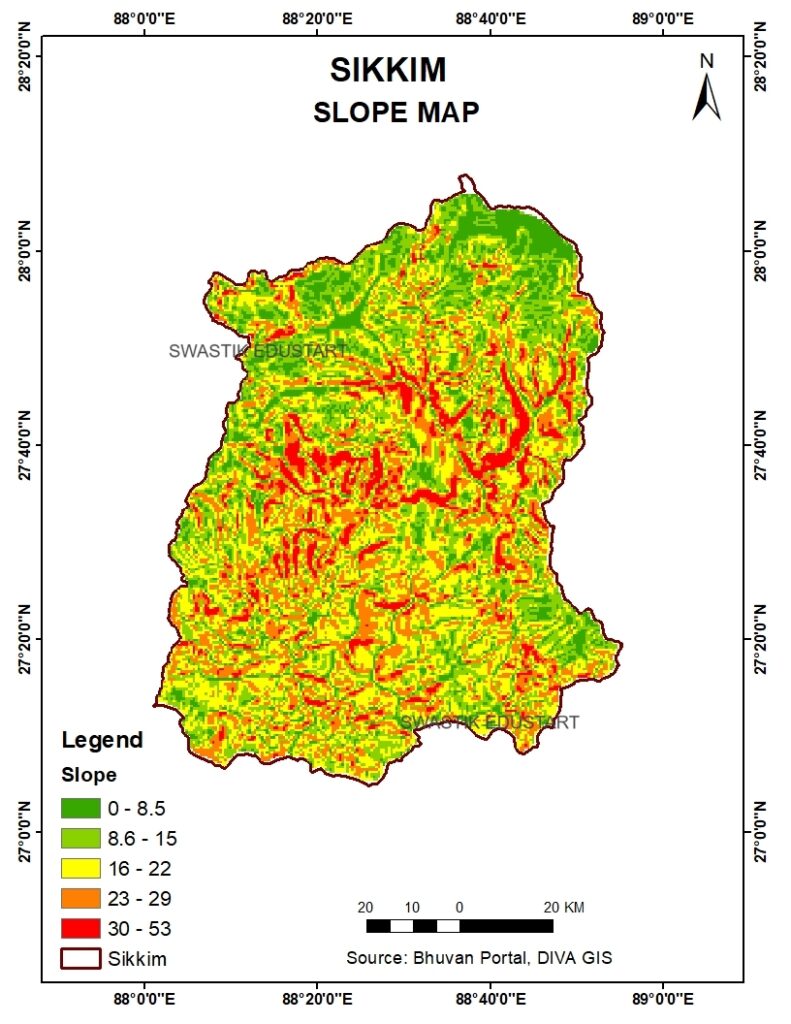SLOPMAP : Exploring the Slop Map of Sikkim: A Comprehensive Guide to Understanding Sikkim’s Topography
Nestled in the northeastern part of India, Sikkim is a land of majestic mountains, lush valleys, and enchanting landscapes. Its dramatic topography makes it a haven for trekkers, nature enthusiasts, and adventure seekers. If you’re planning a trip to this beautiful state, understanding the slop map of Sikkim can provide invaluable insights into its diverse terrain and help you make the most of your visit.
What is a Slop Map?
A slop map, often referred to as a slope map, is a topographic representation that illustrates the gradient or steepness of the land surface. This type of map is crucial for various applications, including planning hikes, understanding erosion patterns, and assessing the suitability of land for development. In the context of Sikkim, a slop map can reveal the intricate variations in elevation across the state, from the towering peaks of the Himalayas to the rolling hills and valleys.
Why is the Slop Map of Sikkim Important?
- Planning Your Adventure: For trekkers and hikers, the slop map provides essential information about the difficulty level of different trails. Steeper slopes indicate more challenging terrain, which can help you choose trails that match your skill level and physical endurance.
- Understanding Local Geography: The map highlights the varying elevations and gradients across Sikkim, allowing you to better understand the state’s diverse landscapes, from the lofty Kanchenjunga range to the serene river valleys.
- Environmental Insights: The slop map aids in analyzing soil erosion patterns and assessing the impact of natural and human activities on the environment. This information is vital for conservation efforts and sustainable tourism practices.
How to Use the Slop Map of Sikkim
- Hiking and Trekking: Use the map to identify trails with manageable gradients. For instance, the trek to Goechala Pass will show steep ascents, while routes around Gangtok might offer more moderate inclines.
- Planning Scenic Routes: If you’re interested in scenic drives or leisurely explorations, the slop map can help you select routes that offer stunning views without challenging gradients.
- Studying Landforms: Geography enthusiasts can use the map to explore the formation of valleys, ridges, and peaks, providing a deeper understanding of Sikkim’s geological history.
Where to Find the Slop Map of Sikkim
The slop map of Sikkim can be accessed through various sources:
- Tourism Websites: Official Sikkim tourism websites often provide maps and guides for travelers.
- Geographic Information Systems (GIS): GIS platforms and apps offer detailed topographic maps, including slope maps.
- Local Trekking Agencies: Trekking and adventure companies in Sikkim may provide customized slop maps for their routes.
Tips for Using he Slop Map
- Combine with Other Maps: For a comprehensive understanding, use the slop map in conjunction with topographic and route maps.
- Check for Updates: Ensure you have the most recent version of the map, as terrain and trail conditions can change.
- Consult Locals: Speak with local guides and residents who can provide practical insights and updates about the terrain.
Conclusion
The slop map of Sikkim is an essential tool for anyone looking to explore this captivating state. By understanding the gradients and elevations, you can better plan your adventures, appreciate the natural beauty, and ensure a safe and enjoyable experience. Whether you’re trekking through the Himalayas or simply admiring the landscapes from a scenic viewpoint, the slop map will enhance your journey in Sikkim.
For more travel tips and detailed guides, stay tuned to our blog and follow us for updates on your favorite destinations.
Hashtags: #SikkimTravel #SlopMap #ExploreSikkim #TrekkingInSikkim #TravelGuide #SikkimAdventure


